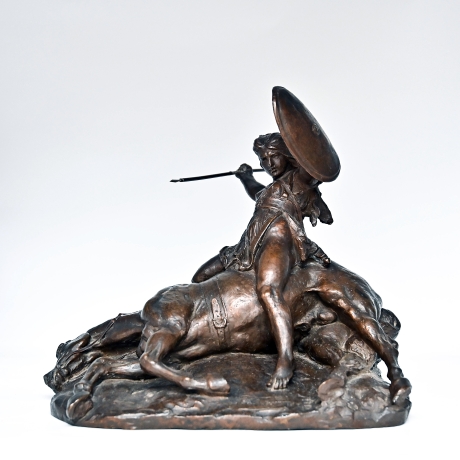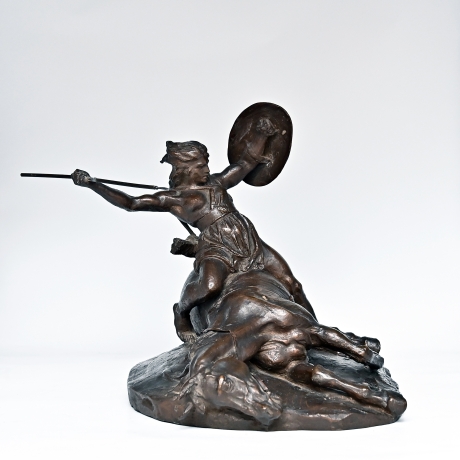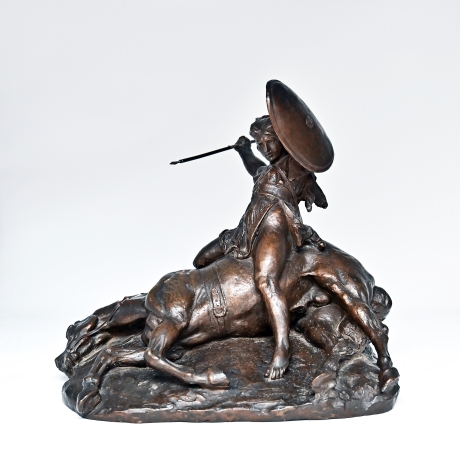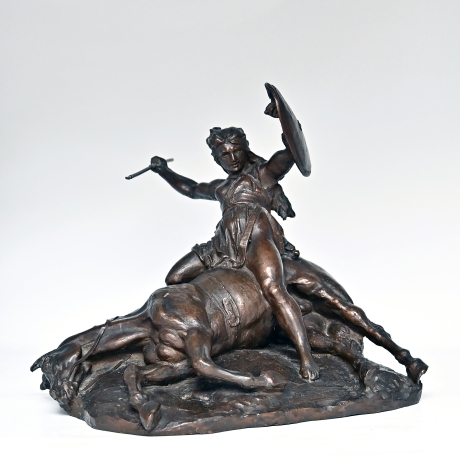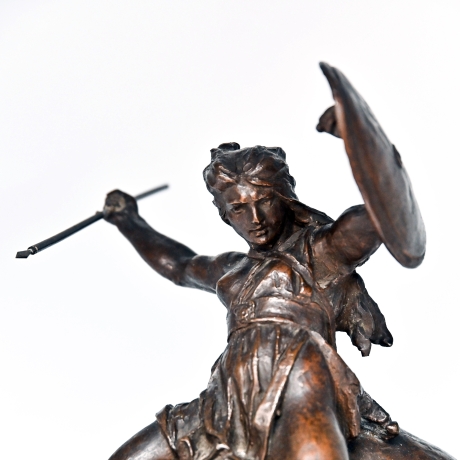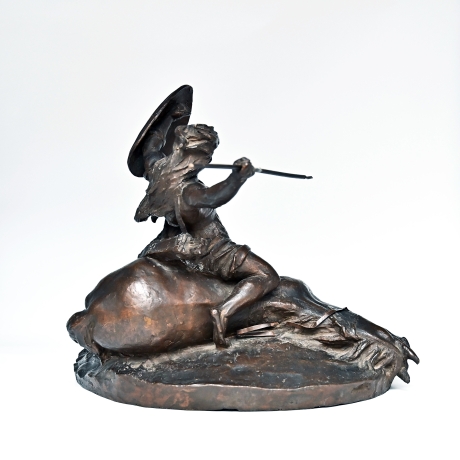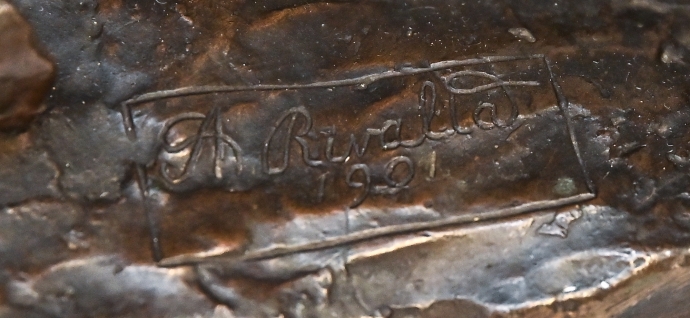| Epoca: | 1901 | Misure: | H 40 x L 44 x P 54 cm | |
| Per info: | Contattare | Prezzo: | € 1700 | Spedizione in Italia: |
Augusto Rivalta, "Amazzone a cavallo" - Scultura in bronzo, firmata, 1901
"Amazzone a cavallo" - Scultura in bronzo di Augusto Rivalta (Alessandria 1837 - Firenze 1925) risalente al 1901 . Firmata e datata sulla base.
Questa magnifica scultura in bronzo, firmata e datata 1901 da Rivalta, raffigura un'Amazzone in combattimento, in una scena di grande impatto drammatico e dinamico.
L'Amazzone è rappresentata in una posa eroica, con il corpo proteso in avanti mentre impugna una lancia nella mano destra e regge uno scudo rotondo nella sinistra.
La guerriera, vestita con una tunica leggera, si trova sopra un cavallo ferito o abbattuto, enfatizzando la tensione e la drammaticità della scena.
L'espressione del volto è determinata e fiera, esaltando il carattere guerriero e leggendario delle Amazzoni.
Il dettaglio della muscolatura, delle pieghe della veste e degli elementi decorativi dimostra la grande maestria di Rivalta nella lavorazione del bronzo.
L'opera si inserisce nel filone del realismo mitologico e storico, tipico della scultura a cavallo tra Ottocento e Novecento.
La qualità della fusione in bronzo e la sua composizione dinamica la rendono un esempio raffinato della scultura figurativa dell'epoca.
Misure: H 40 x L 44 x P 54 cm
Categorie:

